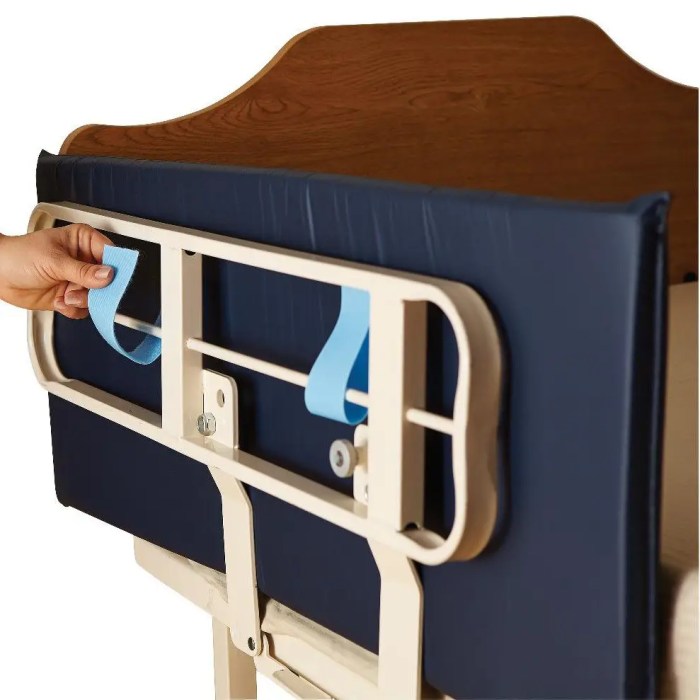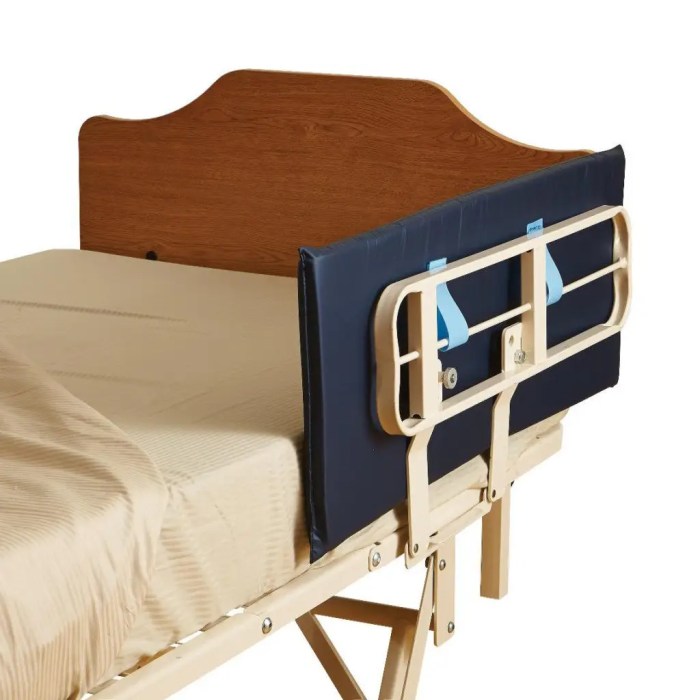In the realm of healthcare, patient safety and comfort reign supreme. Side rail pads for hospital beds play a pivotal role in upholding these principles, offering a myriad of benefits that enhance the overall patient experience.
These meticulously crafted pads, meticulously designed from an array of materials, serve as protective barriers, safeguarding patients from potential injuries and falls. Their presence fosters a sense of security and well-being, contributing to a restful and healing environment.
Overview of Side Rail Pads for Hospital Beds

Side rail pads are essential safety devices used in hospital beds to prevent patients from falling or injuring themselves. These pads are designed to provide a soft and comfortable barrier between the patient and the hard metal side rails of the bed.
Materials commonly used in the construction of side rail pads include foam, gel, and vinyl. Foam pads are lightweight and provide good cushioning, while gel pads offer superior pressure distribution and can help reduce the risk of pressure ulcers. Vinyl pads are durable and easy to clean, making them a practical choice for healthcare facilities.
The benefits of using side rail pads are numerous. They help prevent falls by providing a soft surface for patients to lean against or grab onto. They also reduce the risk of injuries by cushioning the impact of any falls or collisions.
Additionally, side rail pads can improve patient comfort by providing a soft and warm surface to rest against.
Types of Side Rail Pads
There are several different types of side rail pads available, each with its own unique features and advantages.
- Full-Length Pads:These pads cover the entire length of the side rail, providing maximum protection and comfort. They are ideal for patients who are at high risk of falling or who need additional support.
- Half-Length Pads:These pads cover only half the length of the side rail, providing a more discreet and less bulky option. They are suitable for patients who need some protection but do not require full-length coverage.
- Removable Pads:These pads can be easily removed and reattached, making them convenient for cleaning and maintenance. They are a good choice for healthcare facilities that need to frequently clean and disinfect their side rail pads.
- Antimicrobial Pads:These pads are treated with antimicrobial agents to help prevent the growth of bacteria and other microorganisms. They are particularly beneficial in healthcare settings where infection control is a priority.
Considerations for Choosing Side Rail Pads

When selecting side rail pads, there are several factors to consider:
- Patient Needs:The type of side rail pad required will depend on the individual patient’s needs and risk factors. Factors to consider include the patient’s age, mobility, and cognitive status.
- Comfort:Side rail pads should be comfortable for the patient to lean against or grab onto. Choose pads that are made of soft and cushioning materials.
- Durability:Side rail pads should be durable enough to withstand frequent use and cleaning. Look for pads that are made of high-quality materials and are designed to last.
- Safety:Side rail pads should be safe for patients to use. Choose pads that are free of sharp edges or other hazards.
Expert Answers
What materials are typically used in the construction of side rail pads?
Side rail pads are commonly crafted from durable materials such as vinyl, nylon, and mesh, ensuring longevity and resistance to wear and tear.
How do side rail pads contribute to patient safety?
These pads act as protective barriers, preventing patients from accidentally rolling out of bed or sustaining injuries from contact with the metal side rails.
What factors should be considered when selecting side rail pads?
Key considerations include patient needs and preferences, durability, comfort, and ease of cleaning and disinfection.